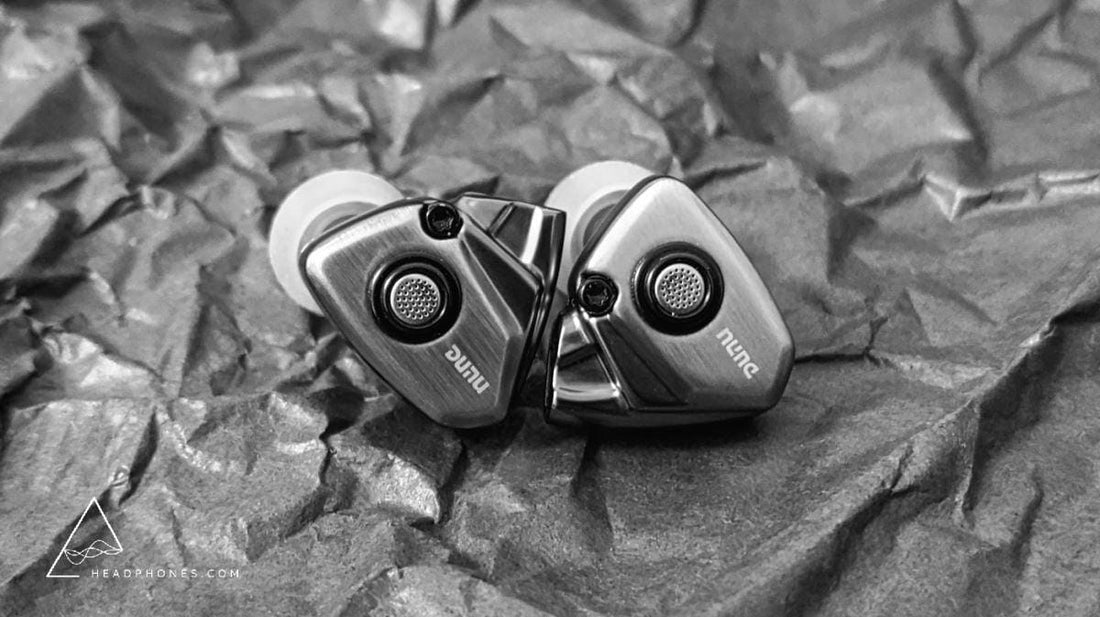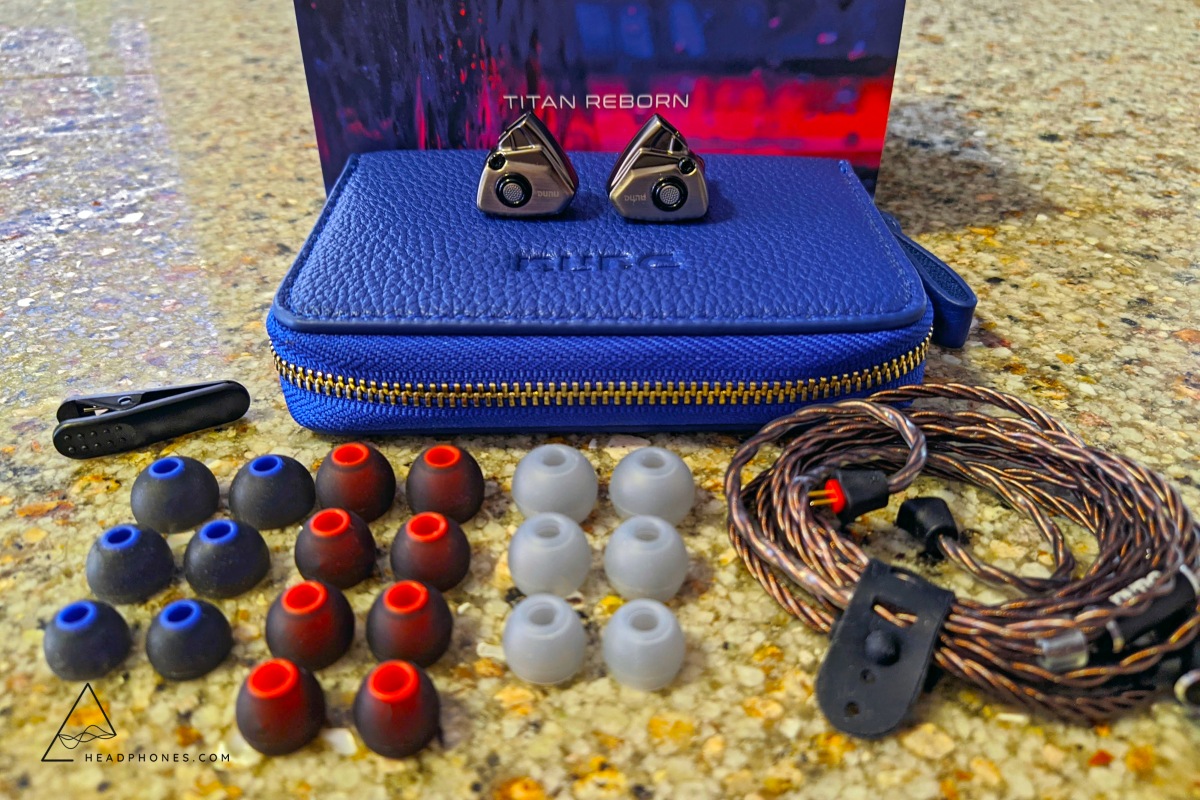DUNU Titan S Review: Remember the Titan S

Review written by @Fc-Construct
Review unit provided by DUNU
Introduction
DUNU is an interesting brand. Though almost forgotten in the Western IEM scene 5 years ago, they’ve come back with a whole slew of IEMs. Most notably are the hugely successful midrange DUNU SA6 and their eccentric single Beryllium DD flagship, the DUNU Luna. Aiming to compete in the budget segment, DUNU has recently released the topic of today’s review, the $80 DUNU Titan S. A reboot of their old Titan line, the Titan S is a single DD IEM that utilizes a relatively large 11 mm LCP diaphragm as its driver. Of course, the <$100 price range isn’t uncontested. The MoonDrop Aria is largely considered to be the IEM to beat, another single DD itself. With high expectations from my time with the SA6, let’s see how the Titan S fares against the brutally competitive budget IEM market.
What’s in the Box?
The first thing you see when you open the box is a brilliant blue leatherette carrying case. Seriously nice. For tips, you have three sets of S/M/L tips each with differing bore size and stem rigidity so you can find something that fits you best. I went with the opaque tips for this review, supposedly designed for a “balanced” tuning. The braided stock 2-pin cable it comes with feels quite high quality, especially at the interconnects which are tightly fastened. There’s relatively low cable noise here. Unfortunately, I did find this cable to have a lot of cable memory and the sheathing feels grippy, leading it to be prone to tangle. Finally, you also get a rubber cable organizer and shirt clip, two little bonus accessories that often get overlooked. It's a nice touch.

The Titan S itself has rather industrial look and feel to it with its angular, gunmetal grey, full metal shell. On the back is what looks like an excessively large vent hole and near the nozzle is another much smaller vent. The Titan S is reasonably comfortable in my ears with no painful edges so no complaints there.
Frequency Response and Tuning
First impressions of the Titan S were positive but not overwhelming. The tuning is neutral-balanced – a focus on midrange tonality with a minor bass boost for bass presence. Not exactly the most interesting tuning out there but one that is well executed here.

Frequency response of the DUNU Titan S. Measurement taken with an IEC-711 clone microphone. Comparisons can only be made relative to other measurements taken by this specific microphone. A peak at about 8 – 10 kHz is likely an artifact of the measurement rig and may not exist as depicted here. Measurements above 8 kHz are not accurate.
The bass curve is tastefully done. Enough to clearly give the Titan S a filled in low end while being subdued enough to avoid intruding or coloring the sound. This pairs nicely with the mids. At approximately 9 dB of pinna gain centering around 3.2 kHz, the Titan S has quite the helping of upper mids that makes it a somewhat forward sounding IEM. However, the slight elevation in the lower mids around that 250 – 400 Hz range plays a significantly role in balancing out all that upper mids energy. It holds back that forwardness just enough to prevent it from becoming in-your-face. After the pinna peak, the Titan S dips in the treble before finally having an upper treble peak. As a result, I don’t find it a treble heavy IEM though the ~12.5 kHz peak does stand out in listening.
Instrument Notes
Drums
Bass is punchy with a well controlled transient response and decay. Don’t expect too much subbass here; the Titan S can come off as strained when reaching for really deep notes and rumbles are limited. Kick drums and toms have plenty of note definition and sound tight. The Titan S’ midbass focus captures the resonant body of the drums to properly characterize each note’s timbre. However my one complaint with the bass is its relative lack of texture. It’s not as bad as the Tin HiFi T3 Plus I recently reviewed but I expected more from this 11 mm LCP diaphragm, especially given my experience with the Sony MDR-EX1000’s 16 mm DD. Snare drums sound excellent on the Titan S with a great blend between the snare’s body and sharp crack of its head.

The hats and cymbals are decent but not outstanding. The only thing of note here is an upper treble peak that can make them sound unbalanced and splashy at times. Personally, I don’t find the Titan S an overly bright IEM as it doesn’t present a super crisp edge on the attack of the hats and cymbals. It’s just this one peak that stands out and may be fatiguing for some. I don’t find timbre to be significantly compromised by it, so this isn’t a dealbreaker for me. For my tastes, I would prefer a little more treble brilliance in the lower and mid treble but that would go against the neutrality the Titan S strives for here.
Guitars/Strings
Strings in general are extremely clean on the Titan S. The lack of texture is a little noticeable on the bass guitar but otherwise the overall tuning fits the neutral profile the Titan S is going for very well. Both acoustic and electric guitars have excellent midrange balance, enough lower mids warmth to be bodied and plenty of clarity in the upper mids for the strum of the strings. Resolution is particularly strong for stringed instruments.
Vocals
The upper mids structure of the Titan S lends itself to a natural tone. Male and female vocals are equally rendered as expected of a neutrally tuned IEM. There is a forward tilt to the Titan S, but not enough to make it shouty thanks to the slight lower mids elevation. As usual, there’s a lot of clarity in the vocals with lead singers and backing harmonies clearly distinguished. No complaints of sibilance or harshness here.

Presentation
The presentation of the Titan S is pretty good. The narrow, in-your-head feeling typical of IEMs is rather diminished here as a result of the rather large vents the Titan S has on its shell. Though soundstage is oftentimes overexaggerated in IEMs and generally seen as unimportant, I certainly appreciate the greater openness of the Titan S or other IEMs with a similar feel. The soundstage itself is fairly large horizontally and comes with a good level of depth. Imaging is nuanced and effectively uses the soundstage to place instruments distinctly. All of this combined with the tuning of the Titan S leads to solid instrument separation.
Resolution and layering are competitive with other top IEMs of this class but not as notable as its presentation. Like many other budget IEMs, there isn’t too much layering going on despite having good sense of instrument separation. Resolution is most effective on guitars and vocals owing to the Titan S’ coherency in the upper mids.
Comparisons
MoonDrop Aria

The Titan S meets the high bar that the Aria set when it was released a year ago but doesn’t blow past it. Both of these IEMs are very much alternatives to each other with the Titan S being a more neutral option with less bass and lower mids warmth. Funny enough, both IEMs have an upper treble peak around 13 kHz. On the Aria, it adds a tizziness to the hats and cymbals that comes off as more splashy on the Titan S. With technical performance, both IEMs are neck and neck. The Titan S has a better staging experience due to its openness, but the Aria’s bass has some of that texturing that the Titan S lacks. Between the two, I prefer the Titan S, if only by a slim margin. The more neutral sound and open presentation appeals more to me even if it means giving up some warmth and bass texture. But if you prefer a more relaxed sound, the Aria is a better choice. Both are superb options.

One last consideration is accessories and build quality. DUNU’s accessory package for the Titan S puts the MoonDrop Aria’s to shame. Most importantly is the cable. The braided cable of the Aria is horrible. Though the Titan S’ does have some cable memory issues itself, it’s much more preferable than what comes stock from MoonDrop. While a 3rd party cable may seem cheap at $10 – 20, that’s an additional cost on top of these already budget focused sets. As for build quality, the Aria’s are documented to have an issue with paint bubbling on some units.
Tin HiFi T3 Plus

I compared the T3 Plus to the Aria quite extensively in my review and my thoughts in there apply to the Titan S. The Titan S edges out the T3 Plus on a technical level just like the Aria does. While the bass of the Titan S isn’t anything to write home about, the T3 Plus lack of texture is even more noticeable. Tuning wise, the T3 Plus is a middle ground between the Titan S and Aria. Less warm than the Aria but not as neutral sounding as the Titan S. The T3 Plus does however lack the upper treble spike present on both the Aria and Titan S, making it an option for those who are sensitive there.

Should You Buy It?
Yes. For $80, the DUNU Titan S is another excellent member of the budget class and will nicely serve those looking for their first pair of IEMs. It nails the neutral balanced tuning almost perfectly save for a small bit of subbass roll-off and the upper treble peak. I’m glad DUNU went for a minor bass boost instead of trying for a flattened bass curve like so-called true neutral targets as it makes the Titan S more accessible for a general audience looking for a neutral IEM that retains bass presence. While the Titan S may not be a groundbreaking, next generation product, it does a lot right. Hopefully DUNU will be able to take the successes they have here and create something that will truly shake-up the market for their next set of products.
---
Discuss the Dunu Titan S on the HEADPHONE Community Forum Here.
---
